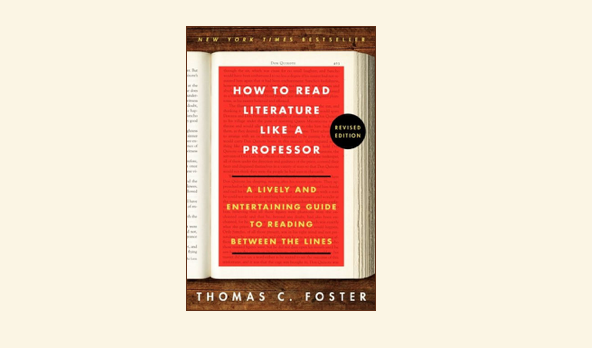Book Review: How To Read Literature Like A Professor by Thomas C. Foster
By the time students reach high school or college, they’ve taken several years of English courses and are able to speak, write, and read the language with ease. Yet, many students still have trouble reading classic literature and most readers often miss out on the deeper literary meaning of the story.
To help readers understand and enjoy literature, Thomas Foster, an English professor with more than thirty years of experience and expertise, has written How to Read Literature Like a Professor.
Author Thomas C. Foster
The book serves as an entertaining guide that introduces readers to literary basics, including symbols, themes, and settings–that provides readers with the tools to better understand literature.
Foster notes that no literature is completely original; the truth is that all literature grows out of other literature. There are certain works of writing that almost all authors have read, such as Shakespeare, the Bible, and the Odyssey.
Authors are inspired by these famous works, and often draw on these texts for inspiration for their own stories, sometimes consciously and other times subconsciously.
Foster advises readers to look for glimpses of familiar stories and ask what the two texts have in common.
To find an example of inspiration from a famous work one can look at Ernest Hemingway’s novel, The Old Man and The Sea (1952).
Hemingway writes about an old and poor fisherman that hasn’t had much luck but remains a good and pure man. The man goes on a three-day fishing trip during which he puts up with a great deal of suffering and injuries while attempting to hook a large fish. When he returns to port, he goes to bed and lays his arms out in the position of crucifixion. The next morning, people see his great fish and start to believe in the fisherman’s skill once again.
Hemingway has a more subtle narrative, but it’s clear to see that the fisherman is a Christ-like figure. Foster points out that almost all text in literature can have a deeper meaning.
Take seasons and weather for example. More often than not, if an author tells readers it is a warm summer day, she is saying that to help convey a specific message.
Foster writes that spring is associated with youth and childhood, summer with romance and adulthood, fall with decline and middle age, and winter with resentment and old age. This is especially important to look for in short works such as poems and short stories to gain a better understanding of the author’s work.
However, Foster notes that sometimes readers have to be careful of a certain event because it may have more than one meaning. Rain in a story can be either a rebirth through baptism or destruction through floods.
Snow can blanket the forest and make it beautiful, but it can also create blizzards that make the world a cold and deadly place.
Towards the end of the book, Professor Foster encourages readers to use what they learned and put their knowledge to the test by analyzing a short story. Foster then asks readers to compare their notes to his own and points out several of the hidden meanings that readers may have missed.
Foster’s book serves as a wonderful nonfiction literary guide that aids readers and students in their engagement with literature.
In the famous poem Divine Comedy, Dante has Virgil to guide him through his journey; for readers of literature, we have Thomas Foster.
If you'd like to get the book, click the button below!
If you enjoyed this article, consider supporting our site or signing up for our monthly newsletter. Thank you!
Reader freebies:

